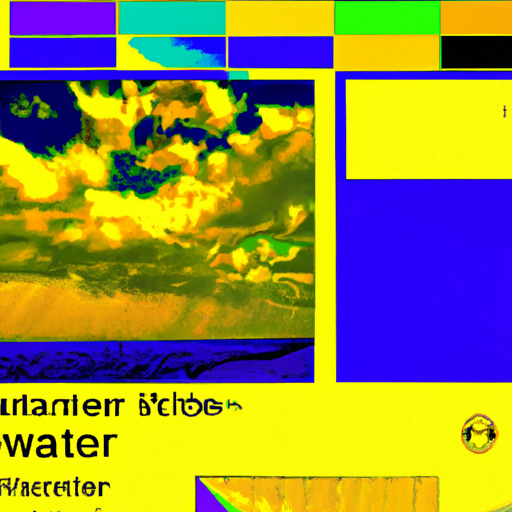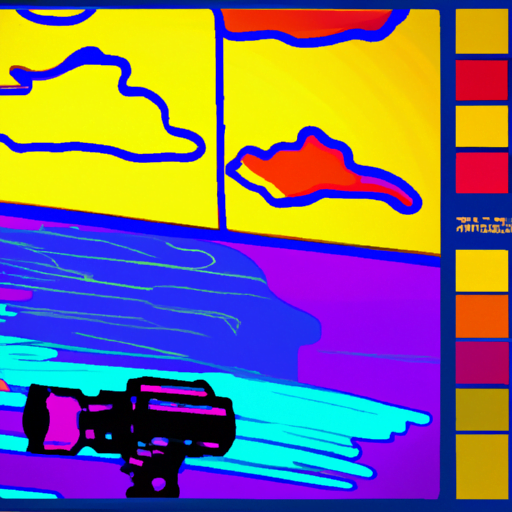
-
Table of Contents
- Designing Weather and Forecasting Interfaces
- The Importance of Weather and Forecasting Interfaces
- User-Centered Design for Weather Interfaces
- 1. Understand User Needs
- 2. Provide Relevant and Contextual Information
- 3. Use Intuitive Data Visualization Techniques
- 4. Incorporate Real-Time Data
- Best Practices in Weather Interface Design
- 1. Keep the Interface Simple and Intuitive
- 2. Provide Multiple Views and Layers of Information
- 3. Offer Customization Options
- 4. Ensure Responsiveness and Accessibility
- Case Studies: Innovative Weather Interface Designs
- 1. The Dark Sky App
- 2. Weather Underground
- Summary
Designing Weather and Forecasting Interfaces

Weather plays a significant role in our daily lives, influencing our activities, decisions, and overall well-being. As technology continues to advance, weather and forecasting interfaces have become increasingly important in providing accurate and accessible information to users. Designing these interfaces requires careful consideration of user needs, data visualization techniques, and the integration of real-time data. In this article, we will explore the key elements of designing weather and forecasting interfaces, along with best practices and examples from industry leaders.
The Importance of Weather and Forecasting Interfaces
Weather impacts various aspects of our lives, from planning outdoor activities to making travel arrangements. Accurate and easily understandable weather information is crucial for individuals, businesses, and even governments. Weather and forecasting interfaces serve as the primary means of accessing this information, making their design a critical factor in ensuring effective communication.
One of the key reasons for the importance of weather interfaces is the potential impact of severe weather events. Timely and accurate warnings can save lives and minimize damage. For example, the National Weather Service’s Storm Prediction Center uses a combination of radar data, satellite imagery, and meteorological models to predict severe weather events such as tornadoes. The interface they provide allows meteorologists to analyze and interpret this data, enabling them to issue timely warnings to the public.
User-Centered Design for Weather Interfaces
Designing weather interfaces requires a user-centered approach to ensure that the information is easily accessible and understandable to a wide range of users. Here are some key considerations:
1. Understand User Needs
Before designing a weather interface, it is essential to understand the needs and goals of the target audience. Different users may have varying requirements, such as outdoor enthusiasts looking for detailed forecasts or farmers needing specific agricultural information. Conducting user research, surveys, and interviews can provide valuable insights into user preferences and expectations.
2. Provide Relevant and Contextual Information
Weather interfaces should present information that is relevant to the user’s location and context. For example, a mobile weather app should automatically detect the user’s location and provide localized weather forecasts. Additionally, providing contextual information such as sunrise and sunset times, UV index, and air quality can enhance the user’s understanding of the weather conditions.
3. Use Intuitive Data Visualization Techniques
Visualizing weather data can be challenging due to its complexity and dynamic nature. However, using intuitive data visualization techniques can help users understand the information more easily. For example, using color-coded maps to represent temperature or precipitation levels allows users to quickly grasp the current and forecasted conditions. The Weather Channel’s website utilizes interactive maps with color gradients to represent temperature variations across different regions.
4. Incorporate Real-Time Data
Real-time data is crucial for accurate weather forecasting. Weather interfaces should integrate real-time data from various sources, such as weather stations, satellites, and radar systems. This data can be used to provide up-to-date information on current conditions, as well as short-term and long-term forecasts. The Dark Sky app, known for its hyperlocal weather forecasts, utilizes a network of weather stations to provide real-time data for precise predictions.
Best Practices in Weather Interface Design
Based on industry research and user feedback, several best practices have emerged for designing weather and forecasting interfaces. Here are some key recommendations:
1. Keep the Interface Simple and Intuitive
Weather interfaces should prioritize simplicity and ease of use. Users should be able to access the information they need quickly and without confusion. Avoid cluttering the interface with unnecessary elements and focus on presenting the most relevant information prominently. The Weather Underground website follows this principle by providing a clean and intuitive interface with clear sections for current conditions, forecasts, and additional details.
2. Provide Multiple Views and Layers of Information
Users have different preferences when it comes to accessing weather information. Some may prefer a concise overview, while others may want detailed data. Weather interfaces should offer multiple views and layers of information to cater to these varying needs. For example, a weather app could provide a summary view with essential details, along with an option to access more detailed information for users who require it.
3. Offer Customization Options
Allowing users to customize the weather interface according to their preferences can enhance the user experience. Customization options may include choosing the units of measurement, selecting the type of information displayed, or setting personalized alerts for specific weather conditions. The Weather.com website offers customization options such as choosing between Fahrenheit and Celsius, displaying wind speed in miles per hour or kilometers per hour, and enabling or disabling specific weather alerts.
4. Ensure Responsiveness and Accessibility
Weather interfaces should be designed to be responsive across different devices and screen sizes. Users should be able to access the information seamlessly on desktops, smartphones, and tablets. Additionally, accessibility considerations should be taken into account to ensure that users with disabilities can access and understand the weather information. Providing alternative text for images, using high contrast colors, and supporting screen readers are some accessibility practices to consider.
Case Studies: Innovative Weather Interface Designs
Several companies and organizations have pushed the boundaries of weather interface design, creating innovative and user-friendly experiences. Let’s explore two notable case studies:
1. The Dark Sky App
The Dark Sky app is known for its hyperlocal weather forecasts and unique interface design. The app provides minute-by-minute precipitation forecasts for the user’s exact location, allowing them to plan their activities accordingly. The interface features a simple and minimalistic design, with a focus on displaying the most relevant information. The use of color-coded graphs and intuitive icons enhances the user’s understanding of the weather conditions.
2. Weather Underground
Weather Underground is a popular weather website that offers a wealth of information and customization options. The website’s interface is clean and intuitive, with a prominent search bar for users to enter their location. The homepage provides a concise overview of the current conditions, along with a detailed forecast for the upcoming days. Users can access additional information such as radar maps, satellite imagery, and user-submitted weather reports.
Summary
Designing weather and forecasting interfaces requires a user-centered approach, intuitive data visualization techniques, and the integration of real-time data. By understanding user needs, providing relevant information, and using intuitive design principles, weather interfaces can effectively communicate weather conditions and forecasts to a wide range of users. Best practices such as simplicity, customization options, responsiveness, and accessibility further enhance the user experience. Case studies of innovative weather interface designs, such as the Dark Sky app and Weather Underground, demonstrate the successful implementation of these principles. As technology continues to advance, the design of weather interfaces will play an increasingly vital role in providing accurate and accessible weather information to users around the world.
